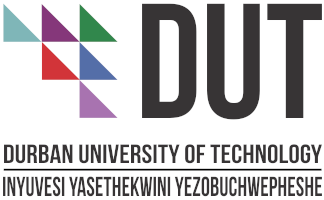Freestyle Referencing for the African Journal of Inter/Multidisciplinary Studies: Exactly why not?
DOI:
https://doi.org/10.51415/ajims.vi.910Abstract
Dear Editor,
After experiencing the disappointment of a rejection letter from a journal editor regarding a submission, an author will often immediately start searching for another journal in which to publish his or her work. A major consideration in this search will be the referencing style specified by the journal concerned. The range of possible format requirements is almost infinite, but fortunately, most journals follow acknowledged styles, such as those of the American Psychological Association, the Modern Language Association or the Chicago/Turabian style. Transforming a text from one referencing style to another is a cumbersome task – though some librarians may disregard this concern, declaring that software such as Mendeley and Endnotes is able to convert ‘appropriately captured’ references seamlessly from one style to another. A problem central to this approach relates to the ‘appropriate capturing’ of such references, a task that requires extreme diligence. For example, the capturing of an author’s first names might be unnecessary when using style A, but could be required by style B – a detail further complicated by the fact that some sources record only the author’s initials.
Another problem posed by conversion is the fact that many journals profess to use a standard, acknowledged referencing style, but then impose idiosyncratic house style rules, where they deviate from the norm. Clearly, converting from one referencing style to another is an intricate, time-consuming endeavour and most authors would prefer to select a journal that uses the same referencing style as the one they originally selected. Why, then, does the African Journal of Inter/Multidisciplinary Studies (AJIMS) not adopt a policy of free referencing styles? Free referencing refers to the journal considering and reviewing articles irrespective of the referencing style used – subject to the style being specified and then applied consistently throughout the article. As most reviewers are exposed to a variety of referencing styles, this should not impact negatively on the review process. I believe that adopting freestyle referencing would attract more authors to AJIMS, thus enlarging the pool of submissions from which the editor can select. Particularly as AJIMS is a progressive journal, and as inter- and multidisciplinary studies require an embracement of diversity, AJIMS is well-positioned to follow a policy of freestyle referencing.
Freestyle referencing is not a new concept. Indeed, it has been widely advocated and is accepted by many respectable journals, such as the 350 titles with Taylor & Francis and Routledge, as well as the 92 Wiley journals that allow it. I am firmly of the opinion that the adoption of freestyle referencing would reduce unnecessary labour expended in efforts to disseminate knowledge and would also allow researchers to focus on researching, all without adding to the load carried by AJIMS’s editorial staff. Indeed, I believe that such a move might well enlarge the pool of submissions to AJIMS, providing the publication with an additional competitive advantage.
Comments on ‘Freestyle Referencing for the African Journal of Inter/Multidisciplinary Studies: Exactly why not?’
Rodwell Makombe | University of the Free State
I think that the issues that you raise in your letter have merit and are worth considering. However, one may have to reflect on why most journals prefer to have a house style or require authors to adhere to a particular style of referencing. I know that changing reference styles when you move from one journal to another is frustrating and time consuming. But the question is: why do most journals prefer to have a house style? I think that while adopting freestyle referencing is quite seductive, we need to consider several issues here. Firstly, when a journal adopts freestyle referencing, it shifts the burden of “policing” referencing from the editorial team of a specific journal to reviewers. From the letter, it is evident that once a journal allows authors to submit without following a specific referencing style, reviewers of that article may have to determine which referencing style the author has adopted, and then enforce consistency in that style (assuming that the said style is not contested). My concern is that if we impose an extra responsibility upon reviewers by asking them to “police” any referencing style as per the preferences of the author(s), we are simply kicking the can down the road. As the author rightly puts it, there are as many referencing styles as there are journals and authors. Even a known and established referencing style such as Harvard has variations depending on the preferences of journals. How do we ensure consistency in cases where authors and reviewers have different ways of interpreting a particular referencing style? Does the reviewer impose his/her Harvard/MLA on authors? Who has the final say on this and by what standard do we measure appropriate referencing?
In short, while adopting freestyle referencing might, on the surface, appear to be the magic wand that will make all the problems of referencing disappear, it is likely to create more headaches for all parties – authors, reviewers, and editors – than solutions. Also, it may consequently raise questions around quality, which is an outcome of standards and benchmarks. A journal without a referencing style is likely to be a journal without an identity. Probably, the question is how we remove the inconveniences associated with referencing without compromising the quality of the journal and creating more work for reviewers. Is freestyle referencing not likely to frustrate authors when reviewers tell them their Harvard style is wrong, given that there are so many versions of Harvard on the internet? While I appreciate the author’s frustrations with referencing styles and their attendant inconveniences, I do not believe that adopting freestyle referencing will make life easier for authors. Rather, it is likely to cause more headaches and open the floodgates for poorly referenced submissions.
Jurgen Becker | University of the Western Cape
I see the merit in the argument presented by the original author of this opinion piece. Adhering to editorial guidelines can be a time-consuming endeavour for applied researchers, especially when one is forced to convert a manuscript into a referencing style that is rarely used. Typically, researchers will prepare a manuscript, including the in-text references and supplementary material, in the editorial style that they are most familiar with. Prior to submission, they will attempt to convert the document to match the editorial guidelines of the target journal. This two-step approach is clearlyinefficient since it can lead to significant reworking of the manuscript. Allowing authors to prepare the manuscript in the style with which they are familiar and comfortable will encourage more submissions to AJIMS and lower the barriers to entry for aspiring authors.
However, this policy may also lead to unintended consequences, including a collection of publications that seemingly lack consistency and quality. The publication guidelines serve an important function insofar as research is presented in a logical fashion that improves the readability and comprehension of the findings. In addition, readers of a specific journal become accustomed to a specific layout, logical flow, and reference style. Using various referencing styles may lead to inconsistencies in how research findings are presented and interpreted.
Jo Nel | University of Limpopo
It is about time that we, in the 21st Century adopt methodologies that enable – not obstruct – the dissemination of knowledge. Indeed, it would be more appropriate to write “the rapid, widespread dissemination of knowledge”. For the life of me, I cannot discern why a specific referencing style is imposed on authors. Surely, surely by this time, with our globalisation and entwined geographies, we should be able to settle on a single system that complies with the essential aspects of referencing, which entails giving due credit to the provenance of a piece of work produced and enabling the rapid retrieval of such work for various purposes. I have often thought that the imposition of strict referencing idiosyncrasies was merely a vanity project by editors or editorial boards. It is also very difficult to imagine an editor rejecting a brilliant treatise simply because the author did not comply narrowly with the required referencing style, yet we know that this often happens. Finally, many – not all – reviewers are like rabid canines, ostentatiously seeking any reason to malign a submission. Rather than producing an article themselves, they spend their time maliciously dismembering another author’s work. Allowing them to reject a submission based on a divergence from the stipulated referencing style is simply adding to their dismal pouch of tools.
Grace Temiloluwa Agbede | Durban University of Technology
This letter to the African Journal of Inter/Multidisciplinary Studies (AJIMS) captures an important issue, or challenge, that academics and researchers are often faced with. The disparities between different types of referencing formats make the submission of the same paper to different journals an extremely laborious task. While some formatting styles are simple, others are complex. And academics have to battle with these different formats every time they prepare a paper. Personally, I find it discouraging to have to reformat my referencing after receiving a rejection from a particular journal. It is within this context that I agree with the writer of the letter that academic journals and their editorial boards should begin to think of a freestyle referencing format that will allow researchers to submit their papers in any of the popularly accepted formats. Another decision they would need to make is whether the journal’s editorial team would make changes to the referencing style or publish the papers as received, with their various referencing styles intact. I believe that journal editors will have to make a tough decision in this respect. While the former option would place additional responsibilities on journal editors, the latter would not. The question, however,remains as to whether journal editors/publishers would really want to see different referencing styles employed across their published articles.
Ria Vosloo | University of Johannesburg
I agree with the Author. AJIMS is an inter/multidisciplinary journal and, as such, should be accessible to people from a range of disciplinary backgrounds. The referencing styles that authors are familiar and comfortable with are often linked to a disciplinary background and not only to specific journals. Working in a different referencing style and ensuring accuracy can become an unnecessary hurdle. I would therefore support a move to freestyle referencing, especially for the AJIMS.
Downloads
Downloads
- PDF 378 Downloads






